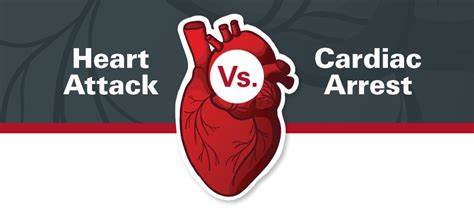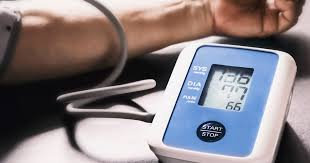Recognizing the key differences between a heart attack and cardiac arrest is vital. These two medical emergencies often get confused, but they are very distinct. Knowing the signs for each helps you act fast. Quick action is crucial for a better outcome, saving a life.
A heart attack is a problem with circulation. Cardiac arrest is an electrical issue. This core difference shapes the symptoms you see and the steps you need to take. Spotting these events early and getting help right away greatly improves a person’s chances.
Understanding the Heart Attack
What is a Heart Attack?
A heart attack happens when blood flow to a part of the heart muscle is blocked. This blockage stops oxygen from reaching that area. Without oxygen, the heart tissue begins to die. Doctors call this a “myocardial infarction.” It’s a serious circulation problem.
Most heart attacks happen because of coronary artery disease (CAD). This is when plaque builds up in the arteries that feed the heart. If this plaque breaks open, a blood clot forms. This clot can entirely block the artery, leading to a heart attack.
Causes and Risk Factors of Heart Attacks
Many things can raise your risk of a heart attack. Atherosclerosis, or hardening of the arteries, is the leading cause. High blood pressure puts extra strain on your heart. High cholesterol can build up as plaque in your arteries. Diabetes also damages blood vessels.
Being obese or smoking dramatically increases your risk. A family history of heart disease can make you more prone. Your risk also grows with age. Living a sedentary lifestyle, with little physical activity, also hurts your heart health. Heart disease is the top cause of death for both men and women in the United States, according to the CDC.
Recognizing the Symptoms of a Heart Attack
Symptoms of a heart attack can vary. They are different for women compared to men. Still, some signs are common. You might feel chest pain or discomfort. This can be pressure, squeezing, or fullness in your chest. The pain often spreads to your arm, jaw, neck, or back. Shortness of breath is also a key symptom. You might experience symptoms such as a cold sweat, nausea, or lightheadedness.
Sometimes, symptoms are less noticeable. You could feel pain that seems like indigestion. Unusual fatigue or sleep problems might also be signs, especially for women. If you suspect a heart attack, do not wait. Get immediate medical help right away.
Understanding Cardiac Arrest
What is Cardiac Arrest?
Cardiac arrest is a sudden event. It happens when the heart’s electrical system goes haywire. This causes the heart to stop beating effectively. Blood stops flowing to the brain and other organs. This leads to a quick loss of consciousness and no pulse. Doctors call this sudden cardiac arrest (SCA).
It’s an electrical problem. The heart’s normal rhythm gets disrupted. This can lead to breakneck, chaotic rhythms like ventricular fibrillation. Or, the heart might stop altogether, known as asystole. When this happens, the heart can no longer pump blood.
Causes of Cardiac Arrest
Many issues can cause the heart’s electrical system to fail. Pre-existing heart disease is a common cause, even if someone didn’t know they had it. A previous heart attack can also damage the heart, making it more prone to electrical problems. Other causes include electrical abnormalities that you are born with.
Severe injuries, like a hard blow to the chest, can trigger it. Drug overdose can also disrupt the heart’s rhythm. Imbalances in electrolytes, like potassium or magnesium, can also play a role. “Cardiac arrest is primarily an electrical issue where the heart’s natural rhythm abruptly fails, causing it to stop pumping blood effectively,” states Dr. Eliza Chen, a leading emergency physician.
Recognizing the Signs of Cardiac Arrest
The signs of cardiac arrest are immediate and unmistakable. The person will suddenly collapse. They will not respond to you or any stimuli. Check if they are breathing. They might not be breathing at all, or only taking abnormal, gasping breaths. Most importantly, they will have no pulse.
Imagine someone suddenly falls to the ground. They are limp. You try to shake them, but they do not move or make a sound. Their chest is not rising and falling as it typically does. These are clear signs. If you see these signs, act quickly. Call for emergency help at once and be ready to start CPR.
Heart Attack vs. Cardiac Arrest: The Critical Differences
Mechanism of the Event
The way a heart attack and cardiac arrest happen is very different. A heart attack is about circulation. It involves a blockage that cuts off blood flow to the heart muscle. Think of it like a clogged pipe. The heart still tries to beat, but part of it is starving for oxygen.
Cardiac arrest, however, is an electrical failure. The heart’s electrical signals get chaotic or stop entirely. This makes the heart stop pumping blood. It’s like a power outage that stops the whole house from working. The heart suddenly stops.
Symptoms Comparison
The symptoms for each event also look very different. A heart attack usually comes on gradually. There might be chest pain, tightness, or other symptoms that build over minutes. The person is often awake and can talk. They might feel sick, but they are conscious.
Cardiac arrest is sudden. There are no real warning signs. The person collapses without warning. They instantly lose consciousness. They will not have a pulse and will not be breathing normally. There is no time to call for help themselves.
Progression of the Event
How these events unfold also differs greatly. With a heart attack, the damage to the heart muscle happens over time. This can be minutes or even hours. The person usually remains conscious throughout this process. They feel unwell, but they are still aware.
Cardiac arrest is different. It means the heart has stopped pumping blood. This leads to an immediate stop of blood and oxygen flow to the brain. Unconsciousness happens within seconds. Without immediate help, brain damage and death can occur very quickly.
Immediate Actions and First Aid
What to Do During a Suspected Heart Attack
If you think someone is having a heart attack, act quickly. First, call emergency services right away. For example, in the U.S., that’s 911. Have the person sit or lie down in a comfortable position. Loosen any tight clothing around their neck or chest.
If the emergency dispatcher advises it, and if the person is not allergic or bleeding, have them chew one adult aspirin. Do not let them drive themselves to the hospital. Wait for medical professionals to arrive.
What to Do During Suspected Cardiac Arrest
Responding to cardiac arrest demands immediate action. Call emergency services (like 911) right away. Check if the person responds to your voice or touch. See if they are breathing normally. If they are unresponsive and not breathing normally, begin CPR right away.
Push hard and fast in the center of their chest. Aim for 100 to 120 compressions per minute. If an Automated External Defibrillator (AED) is nearby, get it and use it as soon as possible. Immediate CPR can double or even triple a person’s chance of survival.
The Role of CPR and AEDs
CPR (Cardiopulmonary Resuscitation) helps keep blood flowing. It pushes blood to the brain and other vital organs when the heart cannot. This buys time until more advanced help arrives—every minute counts.
An AED is a device that can deliver an electrical shock. This shock can help reset the heart’s electrical system. It can restore a normal heart rhythm. “Immediate CPR and rapid defibrillation with an AED are the most critical steps to improving survival rates for sudden cardiac arrest,” says a spokesperson for the American Heart Association. Knowing how to use both can save a life.
Recovery and Long-Term Management
Recovery After a Heart Attack
Recovery from a heart attack can be a long process. Medical treatment will involve medicines to help your heart. Procedures like angioplasty or stenting might open blocked arteries. Cardiac rehabilitation programs are often vital. They allow you to regain strength and learn healthy habits.
These programs include exercise, education, and counseling. They help you feel better and lower your risk of another event. Making significant lifestyle changes is also a key part of getting well.
Living with Heart Conditions
Managing heart health long-term means making healthy choices every day. Eat a heart-healthy diet, full of fruits and vegetables. Get regular exercise, like walking most days of the week. Learn to manage stress, perhaps through mindfulness or engaging in hobbies.
It’s super important to take all your medications as prescribed. Do not skip doses. Regular medical check-ups allow your doctor to monitor your heart. This helps prevent future cardiac events.
Preventing Cardiac Arrest
Preventing cardiac arrest often means managing other heart conditions. Early detection of heart disease is key. If you have conditions like high blood pressure or diabetes, manage them well. Follow your doctor’s advice closely.
Regular check-ups can spot issues before they become emergencies. Taking care of your overall heart health reduces your risk. Living a heart-healthy life is your best defense.
Conclusion
Understanding the difference between a heart attack and cardiac arrest is very important. A heart attack is a circulation issue. It involves blocked blood flow to the heart. Cardiac arrest is an electrical problem. It means the heart’s electrical activity stops.
Each has distinct symptoms you should recognize. For both, calling emergency services right away is crucial. For cardiac arrest, immediate CPR and using an AED are life-saving steps. Knowing these differences can genuinely make a difference for someone in need. Learn the signs, know what to do, and you could save a life.
Discover more from Healthinfo24.com
Subscribe to get the latest posts sent to your email.




Hailee3203
https://shorturl.fm/dp0sn